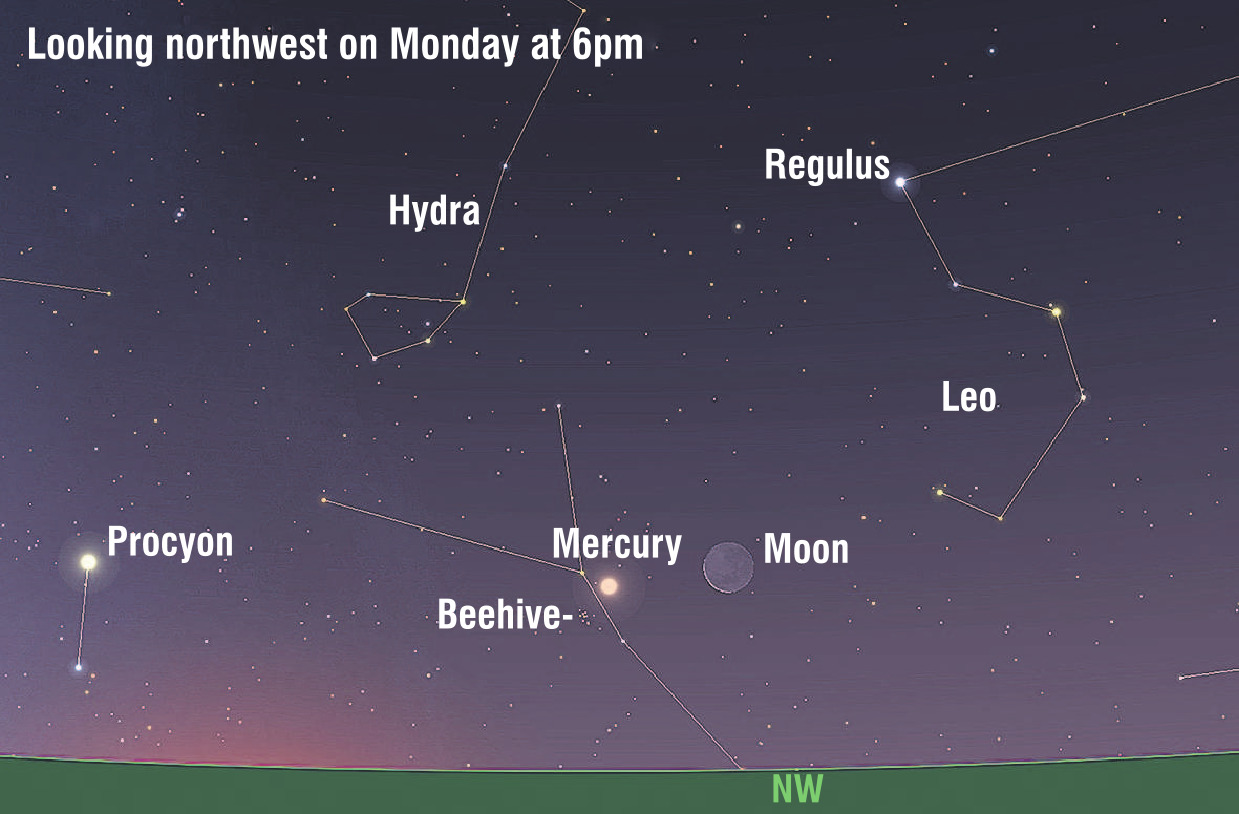
"Come let us view the glowing west,
Not far from the fallen Sun
For Mercury is sparkling there,
And his race will soon be run."
Because it orbits much nearer to the sun than Earth, Mercury always appears close to our parent star in the sky, making it quite hard for casual stargazers to see. The furthest the planet can ever be from the sun in the sky is about 28 degrees, which means that during evening apparitions, it always sets less than two hours after the sun.
Mercury is an intriguing planet, boasting extreme conditions and remarkable features. Closest to the sun, it undergoes drastic temperature changes, enduring scorching highs of 430°C during the day and freezing lows of -180°C at night. Its highly elliptical orbit leads to a significant variation in distance from the sun, with its closest approach being more than 11 million kilometres closer to the sun than its furthest point.
Despite its proximity to the sun, recent studies have revealed that Mercury may harbour water ice in permanently shadowed craters at its poles.
Its heavily cratered surface, reminiscent of Earth’s moon, and its fragile exosphere add to its mystique. Mercury’s swift orbit and slow rotation give rise to a day length equivalent to 176 Earth days.
On Monday night, you can use the moon to spot Mercury in the northwestern sky after the sun sets. About an hour after sunset, at about 6pm, you should be able to see the 5% illuminated waxing crescent moon about eight degrees above the horizon. As it gets darker, look about five degrees to the moon’s left, and you should be able to spot Mercury, which will look like a bright pinky-white "star".











